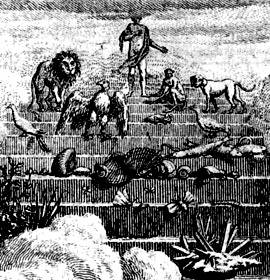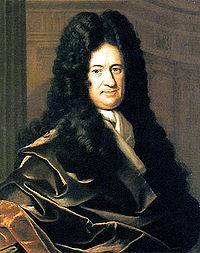The Scala Naturae
Online Biology Dictionary
 Enlarge Enlarge
|
| Scala Naturae (from Charles Bonnet’s Œuvres d'histoire naturelle et de philosophie, 1781). |
When biology was first emerging as a science, its practitioners arranged their taxonomies in accordance with an age-old ordering principle handed down from medieval times, the scala naturae (“scale of nature”). It was a continuous hierarchy of all beings arranged in order of “perfection.”
Also known as “The Great Chain of Being,” this system had religious roots and pictured beings rising in a linear order, starting with inanimate minerals, and rising through fossils (which were considered something between the mineral and the living) to plants, animals, humans, celestial beings, and ultimately, God (an 18th century conception of the scala is shown at right).
As St. Albertus Magnus (De animalibus, thirteenth century A.D.) put it,
This is the so-called Law of Continuity (“Natura non facit saltum”), often cited by Darwin. In his De docta ignorantia (1440), the schoolman Nicolas of Cusa makes similar claims: “All things, however different, are linked together. There is in

|
|
Nicolas of Cusa (1401-1464) |
The Scala Naturae and the Origin
The scala naturae was long the dominant worldview of European thinkers."³ It was strongly associated with the ideas of divine order, perfection, continuity, and gradualism. To a great extent, the view of evolution expressed in the Origin is a temporalization of a previously static scala naturae,⁴ which is to say that it used the same sort of terminology and made many of the same assumptions, but placed the discussion in a temporal context. Thus, in describing the scala, the seventeenth century philosopher Gottfried Wilhelm Leibniz used many of the same terms (“chains,” “missing links,” “gradation,” …) later used in the context of neo-Darwinian theory: “All the different classes of beings which taken together make up the universe are, in the ideas of God who knows distinctly their essential gradations, only so many ordinates of a single curve so closely united that it would be impossible to place others between

|
|
Leibniz (1646-1716) |
So the scala maintains its influence even today in the way that biologists tend to think of evolution as gradual and continuous, rather than saltatory.
However, as a method of classification the scala naturae was gradually abandoned during the eighteenth and early nineteenth centuries. Having never seen among plants a progression in perfection from “base” to “noble,” botanists were the first to drop it as a criterion of classification.⁴

|
|
Georges Cuvier (1769-1831) |
But the concept of a linear chain of order continued to hold sway among zoologist classifiers until Georges Cuvier published his authoritative classification of animals, Le Règne Animal, in 1817, in which he divided the Animal Kingdom on the basis of anatomy into four phyla of equal rank (vertebrates, mollusks, echinoderms, and arthropods). After Cuvier, no biologist would again assert an ordering principle of “growing perfection” constitutes an appropriate basis for constructing systems of classification.
The tendency lingers even today to think of a mammal as somehow more advanced than a bird, or of a reptile as more complex than a fish, and certainly, of an animal as more advanced than a plant, assertions that would not be easy to establish on an objective, empirical basis.
Notes
(Works Cited)
1. Translated in Lovejoy (1936: 79).
2. Translated in Lovejoy (1936: 80).
3. Lovejoy (1936).
4. Mayr (1982: 200)